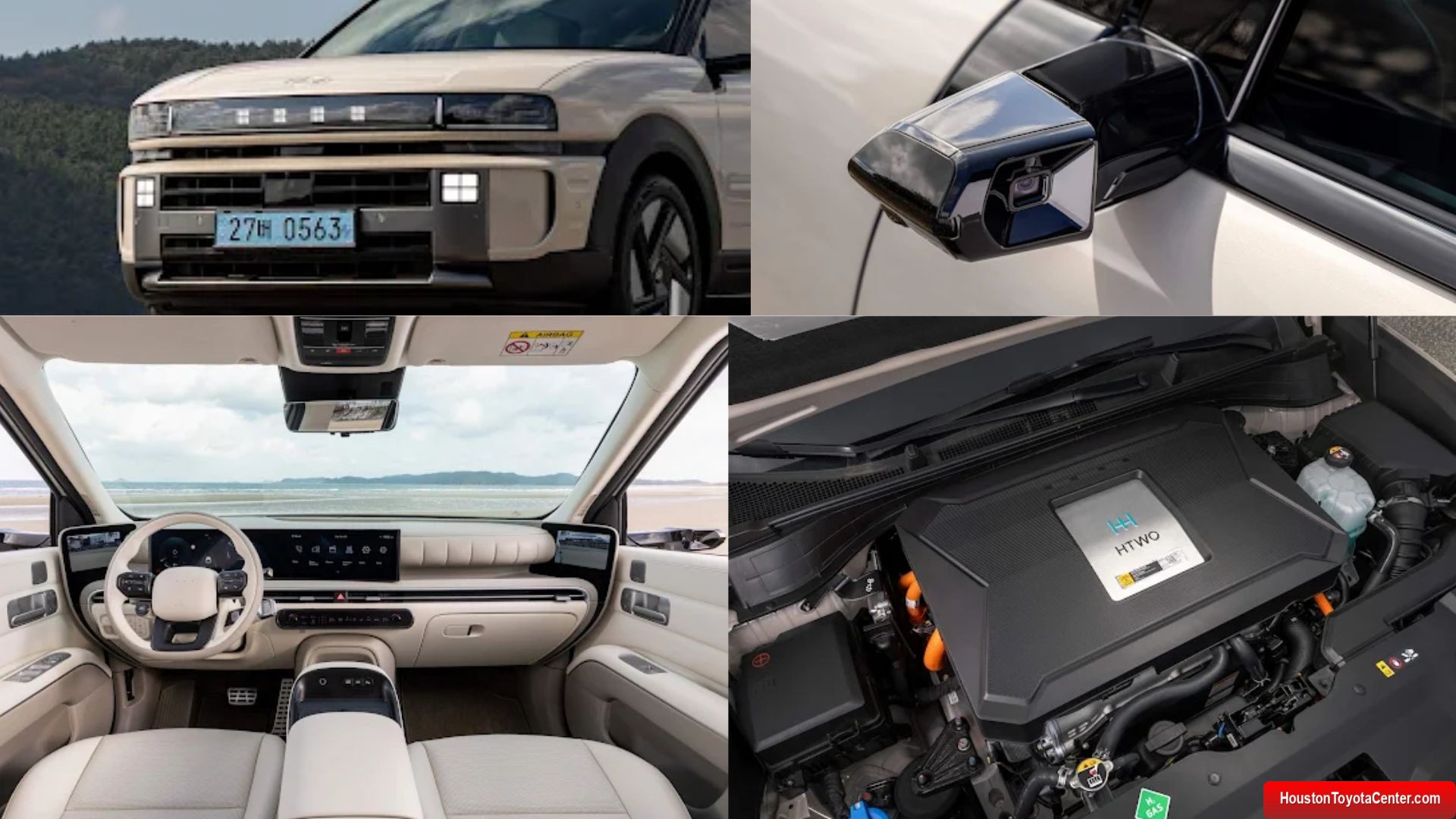In a bold stride toward a zero-emission future, Hyundai has unveiled the next-generation Hyundai NEXO 2026—a hydrogen fuel cell electric vehicle (FCEV) that redefines the boundaries of range, performance, and practicality. With a staggering 826 km of WLTP-certified range, 190 kW of total system power, and a refueling time of just five minutes, the new NEXO positions itself not merely as an alternative to battery-electric vehicles (BEVs), but as a compelling complement in the holistic vision of sustainable mobility. Scheduled for global launch in early 2026, this SUV embodies Hyundai’s long-term commitment to hydrogen as a cornerstone of its clean energy strategy under the HTWO brand.
This in-depth analysis explores every facet of the new NEXO—from its re-engineered fuel cell system and aerodynamic refinements to its AI-enhanced cockpit and structural innovations—demonstrating how Hyundai is transforming hydrogen from a niche technology into a viable everyday solution.
Engine, Fuel Cell, and FCEV System: Power Meets Efficiency
At the heart of the 2026 NEXO lies a completely reimagined fuel cell stack that delivers unprecedented efficiency and output. While the previous generation produced 135 kW of total system power, the new model surges ahead with 190 kW—a 41% increase that fundamentally alters the driving experience.
Key Powertrain Metrics
| Total System Power | 135 kW | 190 kW | +41% |
| Fuel Cell Gross Output | ~100 kW | 110 kW | +10% |
| Fuel Cell Net Output | ~90 kW | 94 kW | +4.4% |
| Electric Motor Power | 120 kW | 150 kW | +25% |
| Torque | 395 Nm | 350 Nm | Optimized for responsiveness |
| 0–100 km/h Acceleration | 9.2 sec | 7.8 sec | -15% faster |
The new 150 kW front-mounted electric motor generates 350 Nm of torque, tuned for immediate response and smooth delivery. Unlike BEVs that rely solely on stored electricity, the NEXO’s fuel cell continuously generates power by combining hydrogen from its tanks with oxygen from the air, producing only water vapor as a byproduct. This onboard generation allows for sustained high performance without battery degradation concerns.
FREE: Quickly identify and understand problems with your vehicle 🚘
CLICK HERECrucially, Hyundai has optimized the fuel cell’s operating temperature range. The system now functions efficiently at lower ambient temperatures, addressing one of the historical limitations of FCEVs in colder climates. This is achieved through refined thermal management and advanced catalyst materials that reduce internal resistance.
The result? A vehicle that doesn’t just match the performance of comparable BEVs—it surpasses them in refueling speed and long-distance usability, all while maintaining true zero-emission credentials.
Autonomy, Hydrogen Storage, and Energy Efficiency
The headline figure—826 km of WLTP range—is not just marketing hyperbole. It’s the product of meticulous engineering across hydrogen storage, aerodynamics, and system efficiency.
Hydrogen Tank System
The NEXO 2026 utilizes three Type IV carbon-fiber-reinforced hydrogen tanks, arranged strategically beneath the floor and along the center tunnel to preserve cabin and cargo space. These tanks now hold 6.69 kg of usable hydrogen, up from 6.33 kg in the prior model—a 5.7% increase achieved through higher storage density and improved pressure regulation (operating at 700 bar).
| Total Tank Volume | 162.6 liters |
| Usable Hydrogen Mass | 6.69 kg |
| Operating Pressure | 700 bar |
| Refueling Time | ~5 minutes |
| WLTP Range (18″ wheels) | 826 km |
| WLTP Consumption (18″ wheels) | 0.81 kg/100 km |
| WLTP Consumption (19″ wheels) | 0.89 kg/100 km |
The 0.81 kg/100 km consumption rate with 18-inch wheels translates to exceptional efficiency—equivalent to roughly 2.6 liters of gasoline per 100 km in energy terms, but with zero CO₂ emissions.
Refueling in five minutes mirrors the convenience of conventional gasoline vehicles, a stark contrast to even the fastest BEV charging (which typically takes 20–30 minutes for an 80% charge). This makes the NEXO ideal for long-haul drivers, fleet operators, and regions where charging infrastructure lags behind hydrogen station development.
Power Electronics and Drive Technologies: Intelligence in Motion
Beyond raw power, the NEXO 2026 introduces smarter energy management systems that enhance both efficiency and driving dynamics.
Enhanced Power Electronics
The high-voltage lithium-ion buffer battery has been doubled in output capacity—from 40 kW to 80 kW—while maintaining a modest 2.64 kWh energy capacity. This isn’t meant for long-range propulsion (like in BEVs) but to handle peak power demands, regenerative braking surges, and rapid torque delivery.
This upgraded battery works in concert with the Smart Regenerative System (SRS), which uses real-time data from:
- Navigation maps (e.g., upcoming hills or curves)
- Radar and camera inputs (distance to vehicles ahead)
- Traffic flow predictions
The SRS automatically adjusts regenerative braking intensity, minimizing driver input and maximizing energy recapture without compromising comfort.
e-Handling & Aerodynamics
Hyundai’s e-Handling system dynamically controls torque distribution and suspension parameters to improve:
- Cornering grip
- High-speed stability
- Steering precision
Underbody panels have been redesigned for optimized airflow, reducing drag and turbulence. Combined with revised front fascia vents and active grille shutters, the NEXO achieves a drag coefficient (Cd) estimated below 0.30—remarkable for a midsize SUV.
Interior, Space, and Connectivity: A Tech-Forward Sanctuary
Inside, the NEXO 2026 blends sustainability with cutting-edge digital convenience.
Space and Practicality
- Center console freed up by relocating the gear selector to the steering column
- Modular trunk floor with adjustable height settings
- Cargo volume:
- 993 liters behind second row
- 1,719 liters with rear seats folded
This versatility rivals many ICE SUVs—proof that FCEV packaging no longer demands sacrifice.
Digital Cockpit and Connectivity
The cabin centers around Hyundai’s Connected Car Navigation Cockpit (ccNC), featuring:
- Dual 12.3-inch curved screens (instrument cluster + infotainment)
- Over-the-air (OTA) updates for software, maps, and features
- Wireless Apple CarPlay & Android Auto
- Generative AI-powered voice assistant capable of contextual understanding (e.g., “Find a hydrogen station with parking and coffee nearby”)
Additional tech highlights:
- Head-up display (optional) projecting speed, navigation, and ADAS alerts
- Vehicle-to-Load (V2L) function with external 230V power outlet (up to 3.6 kW)—ideal for camping or powering tools
- Digital center mirror with rear camera feed (reducing blind spots)
- Digital side mirrors (in select markets like Korea and EU), reducing drag and improving visibility
- Fingerprint authentication for driver profiles and vehicle access
- Digital Key 2.0 via NFC—supports up to 15 authorized devices
- 15W wireless smartphone charging
Structural Integrity, Safety, and ADAS: Built for the Future
Safety is paramount in hydrogen vehicles, and Hyundai has gone to extraordinary lengths to ensure the NEXO 2026 exceeds global standards.
Body Structure and Crash Protection
- Multi-skeleton frame architecture with crumple zones designed to absorb impact energy
- Extensive use of ultra-high-strength steel (UHSS) and hot-stamped components (>30% of body structure)
- Hydrogen tank protection: Tanks are housed in reinforced channels with deformation-resistant mounts and automatic shutoff valves that activate within milliseconds of a collision
This architecture has been validated through simulations of frontal, side, and rear impacts, ensuring hydrogen system integrity remains uncompromised.
Airbags and Passive Safety
- Up to nine airbags, including:
- Front, side, and curtain airbags
- Driver knee airbag
- Center airbag (between front seats to prevent occupant collision)
Advanced Driver Assistance Systems (ADAS)
The NEXO 2026 features Hyundai’s latest SmartSense suite:
| Forward Collision-Avoidance Assist (FCA) | Detects vehicles, pedestrians, cyclists; auto-braking |
| Lane Keeping Assist (LKA) – Gen 2 | More precise steering correction; works up to 180 km/h |
| Blind-Spot Collision-Avoidance Assist (BCA) | Active steering intervention if lane change into occupied zone |
| Highway Driving Assist (HDA) – Gen 2 | Semi-autonomous highway driving with lane centering and adaptive cruise |
| Remote Smart Parking Assist (RSPA) – Gen 2 | Park or retrieve vehicle via smartphone (up to 50 meters) |
| Parking Collision-Avoidance Assist | Prevents low-speed bumps during parking maneuvers |
Notably, the NEXO 2026 is the first FCEV approved for trailer towing in Europe, with a capacity of 1,000 kg—expanding its utility for recreational and light commercial use.
Acoustic Comfort, Materials, and Design Philosophy
Hyundai has engineered the NEXO 2026 to be a serene, refined space—critical for long-distance travel.
NVH (Noise, Vibration, Harshness) Innovations
- Active Road Noise Cancellation (ANC-R): Microphones detect tire and road noise; speakers emit inverse sound waves to cancel it out
- Sound-absorbing tire foam reduces cavity resonance
- Enhanced acoustic glass and multi-layer insulation in doors, floor, and firewall
- Suspension recalibration for improved ride comfort without sacrificing handling
Sustainable Interior Materials
True to its eco-mission, the cabin avoids virgin plastics and animal leather:
- Bio-processed leather (derived from plant oils)
- Recycled PET fabric (from plastic bottles)
- Bioplastics for trim elements (sugarcane- or corn-based polymers)
- Natural dyes and low-VOC adhesives
Exterior Design: “Art of Steel”
The NEXO 2026 debuts Hyundai’s “Art of Steel” design language—characterized by:
- Sculpted body sides with sharp character lines
- A bold, geometric front fascia housing the HTWO emblem
- Signature “4 Dot Lamps” in both front and rear lighting clusters
- Aerodynamic wheel designs (18″ and 19″ options)
Available in six exterior colors, including new eco-inspired shades like Hydrogen Blue and Graphite Moss.
Technical Specifications Summary (European Model)
| Length | 4,750 mm |
| Width | 1,865 mm |
| Height | 1,640 mm (1,675 mm with roof rails) |
| Wheelbase | 2,790 mm |
| Total Power | 190 kW |
| Fuel Cell Output | 110 kW (gross) / 94 kW (net) |
| Electric Motor | 150 kW / 350 Nm |
| Battery | 2.64 kWh / 80 kW output |
| Hydrogen Capacity | 6.69 kg (162.6 L) |
| WLTP Range | 826 km (18″ wheels) |
| Refueling Time | ~5 minutes |
| Towing Capacity | 1,000 kg (EU) |
| 0–100 km/h | 7.8 seconds |
The Road Ahead: Hydrogen’s Moment?
The 2026 Hyundai NEXO is more than a car—it’s a statement. With 826 km of range, five-minute refueling, and 190 kW of clean power, it addresses the core pain points of EV adoption: range anxiety and charging time.
Yet, its success hinges on hydrogen infrastructure. As of 2025, Europe has ~300 public hydrogen stations, primarily in Germany, France, and Scandinavia. Hyundai is actively partnering with governments and energy firms to expand this network, including mobile refueling units and on-site electrolysis at dealerships.
For now, the NEXO 2026 will likely appeal to:
- Fleet operators (taxis, corporate shuttles)
- Early adopters in hydrogen-rich regions
- Eco-conscious premium SUV buyers seeking alternatives to BEVs
But as green hydrogen production scales and costs fall, the NEXO could become a mainstream choice—proving that the future of zero-emission transport isn’t just electric, but electrochemical.
Hyundai isn’t betting against batteries. It’s betting on diversity—and with the NEXO 2026, it has built the most convincing hydrogen vehicle yet.


Leave a Reply